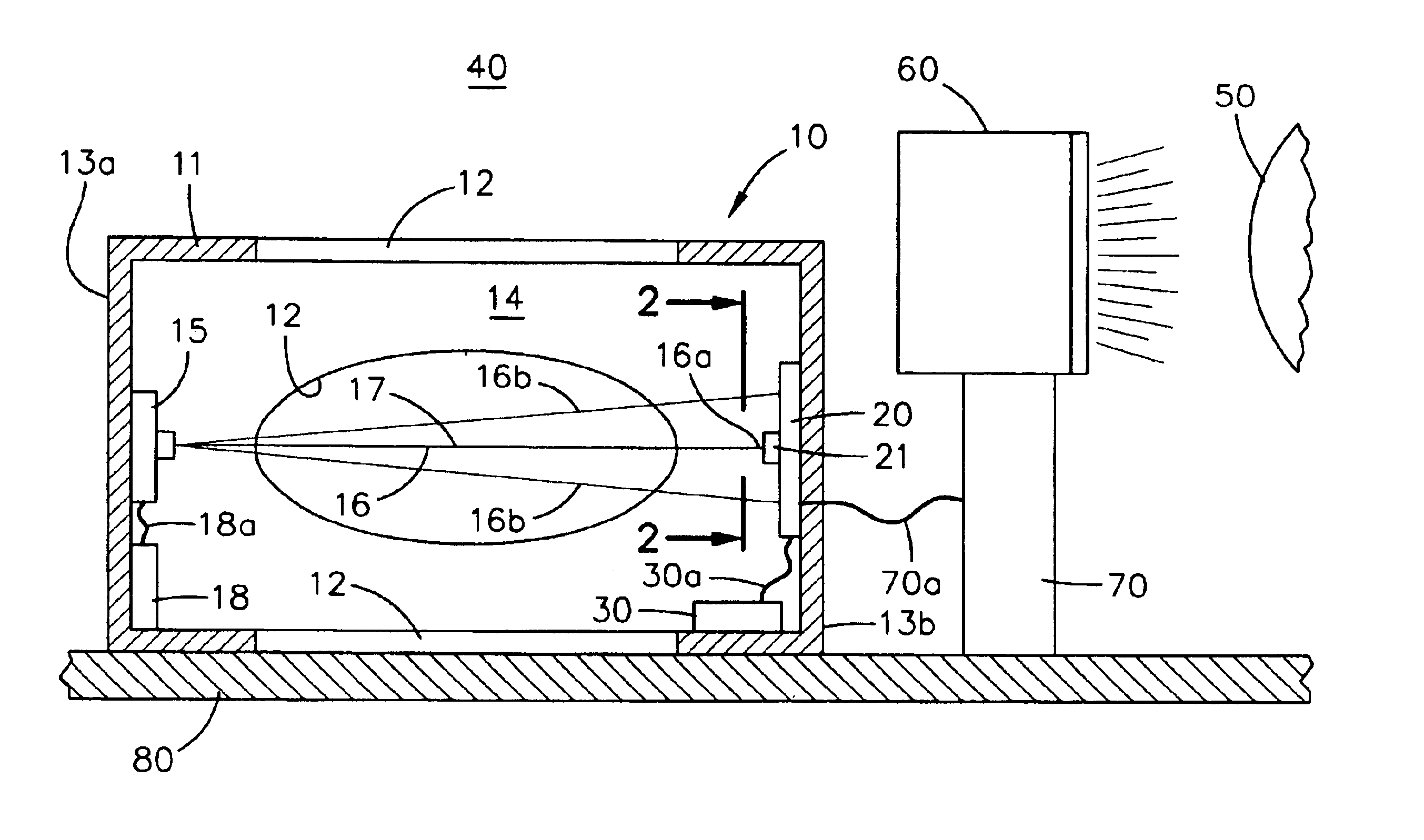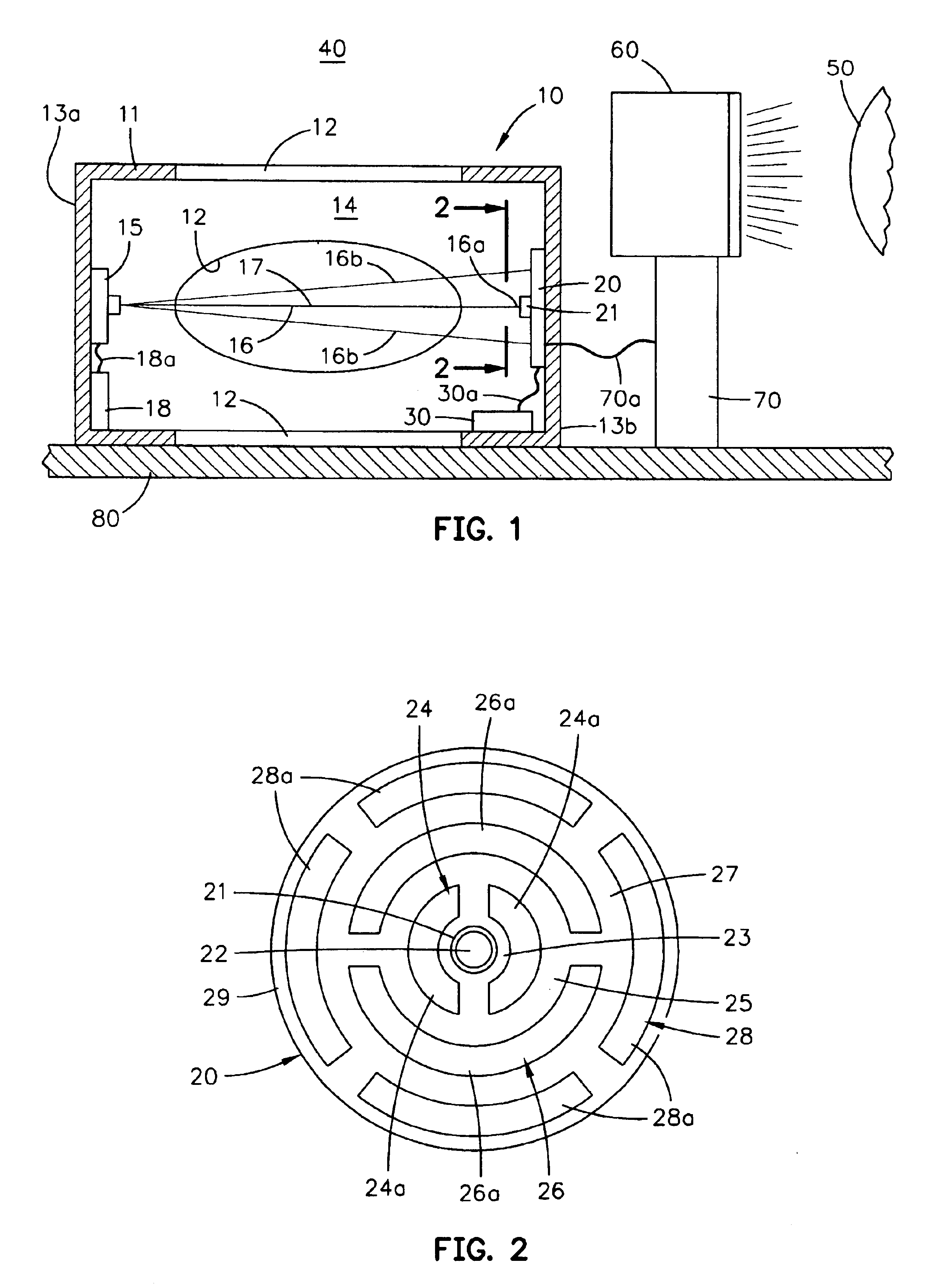Light scattering detector
a detector and light scattering technology, applied in the direction of instruments, material analysis, withdrawing sample devices, etc., can solve the problems of difficult measurement of scattering function, inability to direct measure the scattering phase function, and no available sensor is known to accurately perform this measurement, etc., to achieve the effect of improving the signal strength
- Summary
- Abstract
- Description
- Claims
- Application Information
AI Technical Summary
Benefits of technology
Problems solved by technology
Method used
Image
Examples
Embodiment Construction
Referring to FIG. 1, detector 10 of this invention reliably measures the scattering, or scattering function of light. Detector 10 is particularly adapted to measure phenomena known as the near-direct forward scattering function in mediums, such as water 40. Knowing what this scattering function is enables more responsive detection, identification, and classification of objects, such as a mine 50 submerged in the harsh marine environment by a sensor module 60 connected to a processing system 70. The more responsive operation is assured since the performance of sensor module 60 is strongly influenced by the characteristics of the ambient water in which it is operating. Detector 10 of this invention can be compactly packaged and may be mounted adjacent sensor module 60 on a submersible platform 80 or other underwater mounting surface to provide real-time data representative of scattering functions for processing system 70 associated with sensor module 60. Optionally, detector 10 and pr...
PUM
| Property | Measurement | Unit |
|---|---|---|
| diameter | aaaaa | aaaaa |
| angles | aaaaa | aaaaa |
| height | aaaaa | aaaaa |
Abstract
Description
Claims
Application Information
 Login to View More
Login to View More - R&D
- Intellectual Property
- Life Sciences
- Materials
- Tech Scout
- Unparalleled Data Quality
- Higher Quality Content
- 60% Fewer Hallucinations
Browse by: Latest US Patents, China's latest patents, Technical Efficacy Thesaurus, Application Domain, Technology Topic, Popular Technical Reports.
© 2025 PatSnap. All rights reserved.Legal|Privacy policy|Modern Slavery Act Transparency Statement|Sitemap|About US| Contact US: help@patsnap.com


